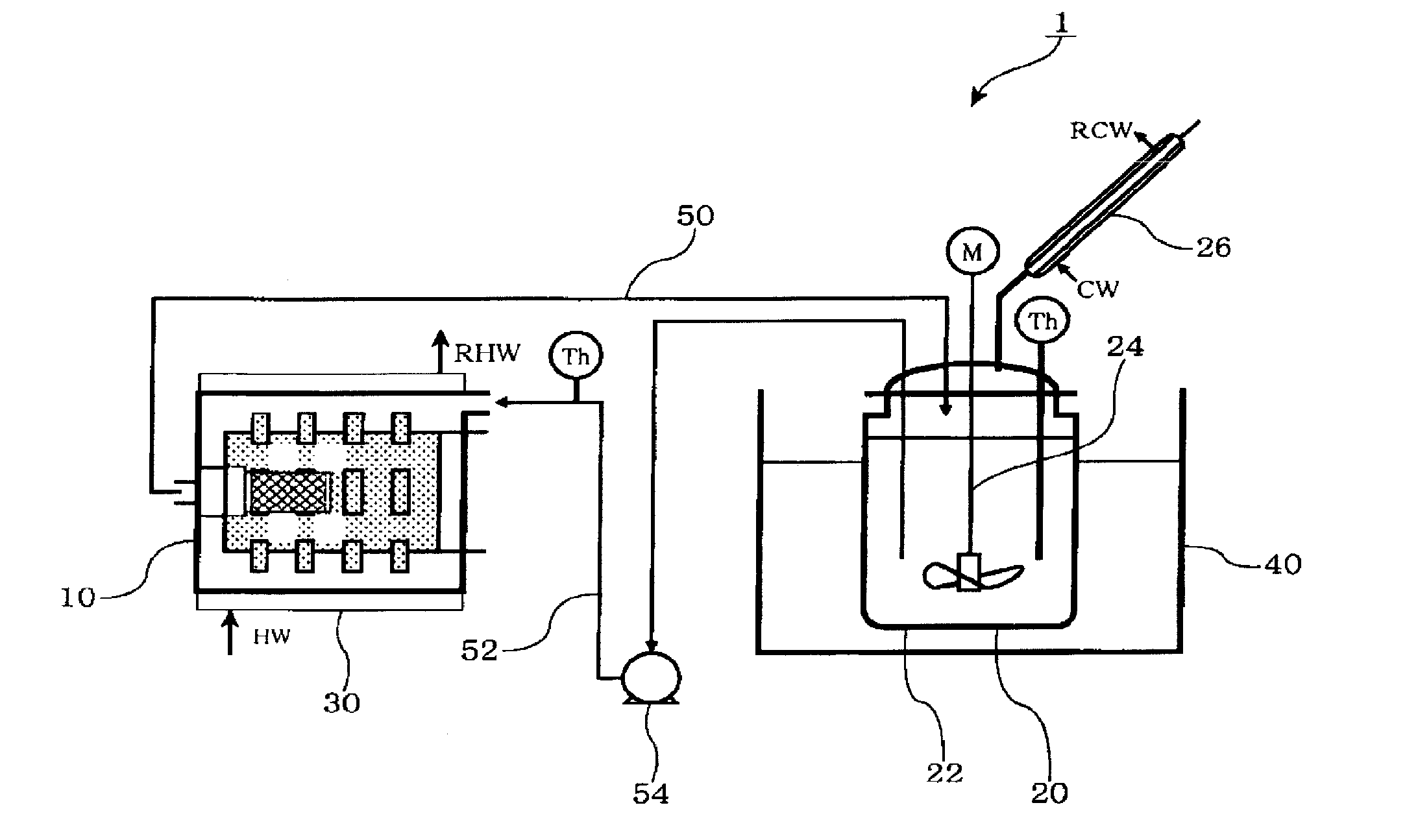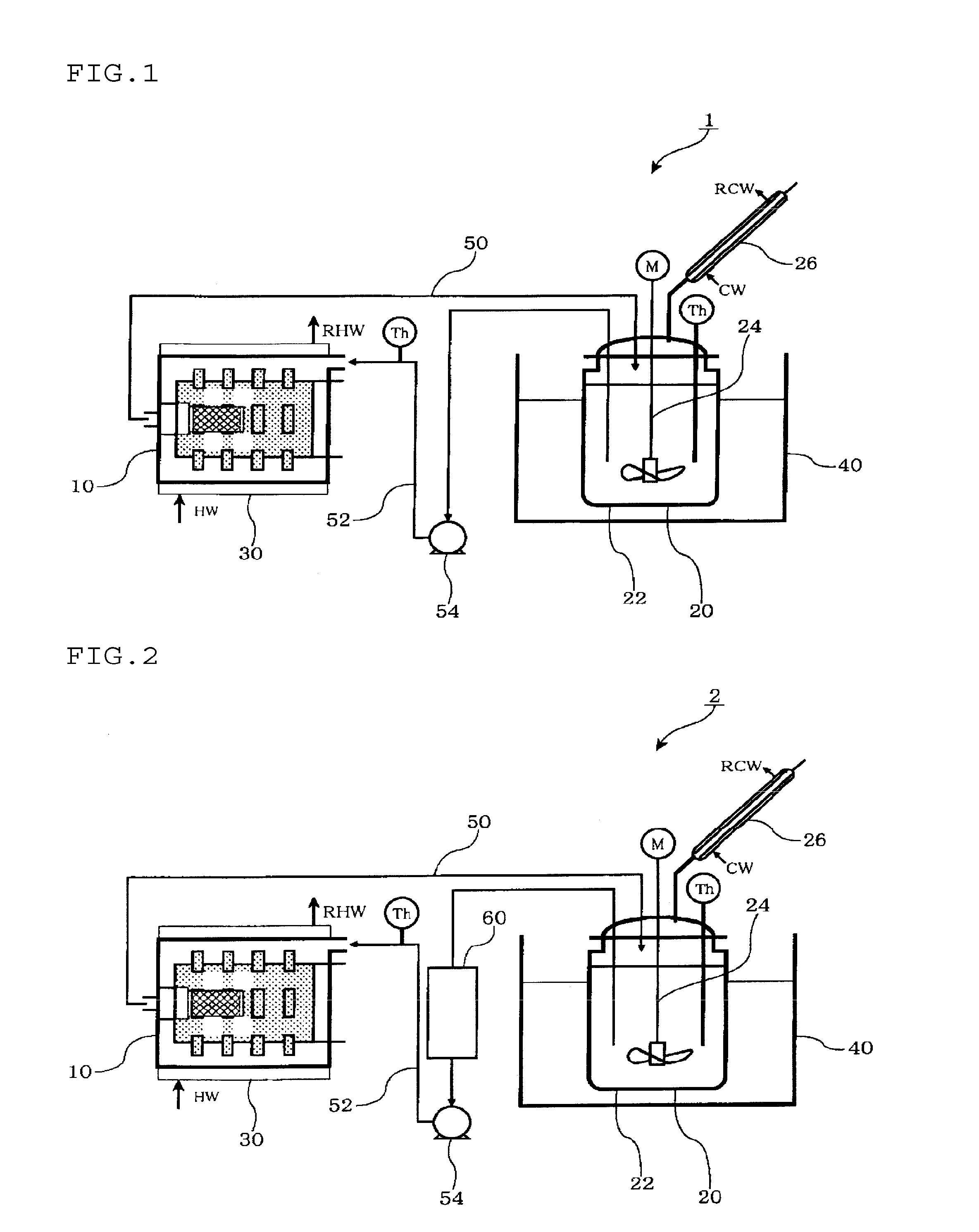Production method of solid electrolyte
a production method and electrolyte technology, applied in the field of solid electrolyte production methods, can solve the problems of inability to easily proceed with reaction at room temperature, and the reaction process is prone to considerable safety problems, and achieve the effect of facilitating reaction and ensuring safety
- Summary
- Abstract
- Description
- Claims
- Application Information
AI Technical Summary
Benefits of technology
Problems solved by technology
Method used
Image
Examples
production example 1
[0081]Under a stream of nitrogen, 270 g of toluene as a nonpolar solvent was placed in a 600 mL-separable flask, 30 g of lithium hydroxide (manufactured by Honjo
[0082]Chemical Corporation) was added thereto. The mixture was kept at a temperature of 95° C. while stirring at 300 rpm with a FULLZONE mixing blade. The resultant slurry was heated up to a temperature of 104° C. while blowing hydrogen sulfide into the slurry at a feed rate of 300 mL / minute. From the separable flask, an azeotropic gas of water and toluene was continuously discharged. The slurry was dehydrated by condensing the azeotropic gas with a condenser equipped out of the system. During this, fresh toluene was continuously supplied to the system in an amount equal to that distilled from the system, to keep the level height of the reaction solution constant.
[0083]The water content of the condensate liquid gradually decreased, and distillation of water was not observed after 6 hours from the...
example 1
Solvent Being Mixed Solvent of Toluene and THF
[0087]The inside of the flask with a stirrer was replaced with nitrogen. The flask was charged with 3.37 g of the lithium sulfide obtained in Production Example 1 (taking the purity into consideration, 3.27 g thereof was lithium sulfide) and 5.32 g of diphosphorus pentasulfide (manufactured by Sigma-Aldrich Japan), and 60 mL of dehydrated toluene having a water content of 10 ppm or less and 65 mL of tetrahydrofuran having a water content of 10 ppm (THF; manufactured by Wako Pure Chemical Industries, Ltd.) were added, and the contact was conducted at a temperature of 30° C. (room temperature) for 24 hours.
[0088]Solid constituents were separated by filtration, and vacuum dried at a temperature of 120° C. for 40 minutes to prepare a solid electrolyte.
[0089]The resultant solid electrolyte had an ionic conductivity of 1.2×10−4 S / cm. As a result of the X-ray diffraction (CuKα: λ=1.5418 Å), no peak other than the halo pattern derived from an am...
example 2
Solvent Being Mixed Solvent of Toluene and THF
[0093]A solid electrolyte was produced and evaluated in the same manner as in Example 1 except that a mixed solvent of 115 mL of dehydrated toluene having a water content of 10 ppm or less and 10 mL of dehydrated THF having a water content of 10 ppm or less was used in place of the mixed solvent of the dehydrated toluene and THE.
[0094]The resultant solid electrolyte had an ionic conductivity of 1.2×10−4 S / cm. As a result of the X-ray diffraction (CuKα: λ=1.5418 Å), no peak other than the halo pattern derived from an amorphous product was observed, and it was confirmed that the resultant solid electrolyte was a glass substance.
PUM
| Property | Measurement | Unit |
|---|---|---|
| polar | aaaaa | aaaaa |
| volume ratio | aaaaa | aaaaa |
| molar ratio | aaaaa | aaaaa |
Abstract
Description
Claims
Application Information
 Login to View More
Login to View More - R&D
- Intellectual Property
- Life Sciences
- Materials
- Tech Scout
- Unparalleled Data Quality
- Higher Quality Content
- 60% Fewer Hallucinations
Browse by: Latest US Patents, China's latest patents, Technical Efficacy Thesaurus, Application Domain, Technology Topic, Popular Technical Reports.
© 2025 PatSnap. All rights reserved.Legal|Privacy policy|Modern Slavery Act Transparency Statement|Sitemap|About US| Contact US: help@patsnap.com


